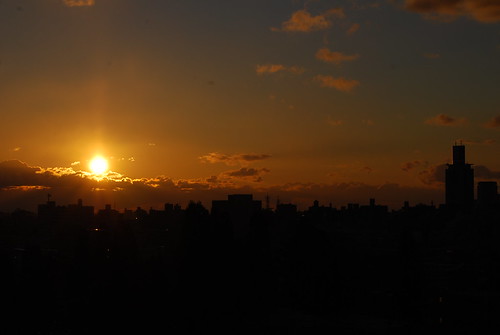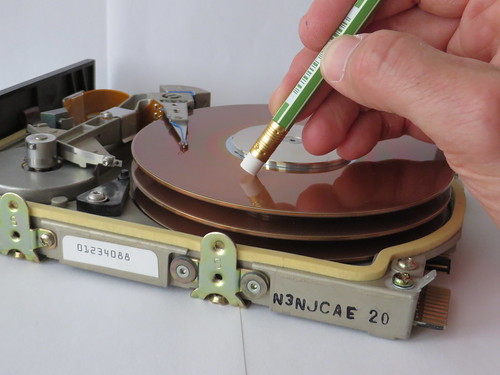Easter Sunday
Picture: cc arditpg
My dear friends, do you know what it takes to catch a sunrise? Have you ever tried? People sometimes do it while on vacation. Or at a retreat. Typically, it requires movement of some sort. You have to get out of bed early, for example. And maybe even climb a hill. And you need to turn your eyes to the east, because that’s where the sun comes from. And then, if you pay attention patiently enough, you will see it. The dawning of a new day. You will gaze in wonder, as the light gradually overtakes and overwhelms the darkness. An awe-inspiring sight. Something that will probably make you want to tell others about it. As soon as possible. To post your pics. To tweet your excitement. To share your experience. To proclaim your joy.
Movement, attention and proclamation. M-A-P. These three steps serve as a map that leads us to the sunrise. A map that works well for Easter too. For Easter, as you know, is very much like a sunrise. The gospel begins by telling us that it was very early on the first day of the week and still dark. The sun had not yet risen. Except that this, as you know, is no ordinary darkness. This is chapter 20 of John’s gospel. Earlier, in chapter 13, at the Last Supper, after Judas goes out to betray Jesus, we’re told that night had fallen. The night of ignorance and unbelief. Of betrayal and hardness of heart. A spiritual darkness. Which lingers into chapter 20. Even as Mary of Magdala approaches the tomb, on that first Easter morning.
This is the deeper darkness that Easter dispels. Just like how the night is overtaken and overwhelmed by the rising of the sun. But how do people go about catching this spiritual sunrise? How to experience its power? Where to go? What to do? The Mass readings provide us with the map.
The first step is MOVEMENT. We see it most clearly in the gospel. Notice how everyone is moving. Running. Mary runs to Simon Peter and the beloved disciple. Who both then run to the tomb together. But that’s not all. After they arrive there, a more important movement takes place. They both enter the tomb. One after the other. Which is probably not an easy thing for them to do. For the tomb is also a spiritual place. To enter it is to plunge into their own inner darkness. Imagine what this must be like. Especially for Peter. Who had three times denied the Lord. To enter the tomb is to face his own guilt and shame. His own grief and pain. Not an easy movement to make.
But, somehow, the disciples manage it. Spurred on, perhaps, by their love for their Master. Is it any accident that the one who reaches the tomb first is the disciple described as the one whom Jesus loved? In any case, they both enter the tomb. Much like how people might climb a hill to watch the sunrise. And it is here that the day begins to dawn for them. Here, the burial cloths–once only trappings of death–are transformed into signs of new life. The reading tells us that at least one of them saw and he believed.
This, my dear friends, is the first step of Easter. Movement. And this too is what each of us needs to undertake. In fact, this is what we have been doing throughout the great Season of Lent. Move. From the superficial comfort of our preoccupied lives. To the unresolved tensions that so often lie hidden below the surface. The unexpressed hungers and unconfessed guilt. The unasked questions and unacknowledged pain. All the things that we so often ignore and suppress. Only to have them engulf us. Like the blackest of nights. What to do? How to catch the sunrise? We need first to follow Christ into this inner darkness. To enter, with him, this interior tomb. And there to allow him to convince us that he must rise from the dead.
Nor is this movement something that happens once and for all. However intense our initial conversion experience may have been. Whether it was at the RCIA or the CER. The PRE or ME. Or at some other retreat or renewal programme. The challenge for us is to remain attentive. To keep moving daily. To keep facing, with Christ, our inner darkness. So that it can be transformed for us into light. ATTENTION. This is the second step of Easter.
And this is also the good habit that the second reading encourages us to cultivate. Let your thoughts be on heavenly things, not on the things that are on the earth, because you have died, and now the life you have is hidden with Christ in God. In other words, keep watch over yourself. Especially your inner self. Your thoughts and feelings. Your attitudes and convictions. Be alert to the subtle ways in which darkness can creep into your heart. Drawing you into anger and resentment. Depression and despair. Envy and rash judgment. And when you see this happening, make a conscious decision to turn toward the light. Like how people turn to face the east. In order to catch the rising of the sun. To see light in the midst of darkness. New life in the face of death.
And what happens if you do see the light? What if you do catch the sunrise? Is that the end of it? No. For it is in the nature of true joy, of authentic hope, always to seek company. Always to yearn to be shared with others. Isn’t this why we see Peter doing what he’s doing in the first reading? He goes to the home of Cornelius, a Roman centurion. And proclaims the good news to his whole household. We are… witnesses. We have eaten and drunk with him after his resurrection from the dead. And he has ordered us to proclaim this to his people… Movement and attention leads to PROCLAMATION. The third step of Easter.
Movement, attention and proclamation. Three steps that enable us to catch the rising of the sun. The dawning of the day. The same day that we sang about in the response to the psalm: This day was made by the Lord: we rejoice and are glad. A day that consists not just in 12 or 24 hours. But an eternal day. Filled with joy and hope. This is the gift of Easter. A gift so badly needed not just by us. But also by the rest of our world. Covered as it is in the painful night of ignorance and unbelief. Of conflict and division. Of loneliness and pain. The new day of joy and hope. This is the gift that, as baptised Christians, followers of the Crucified and Risen One, we are all called to share.
Sisters and brothers, Christ the Eternal Sun has Risen! What must we do to keep basking in the joy of his Glory? To keep ushering others into the brilliance of his Light today?




